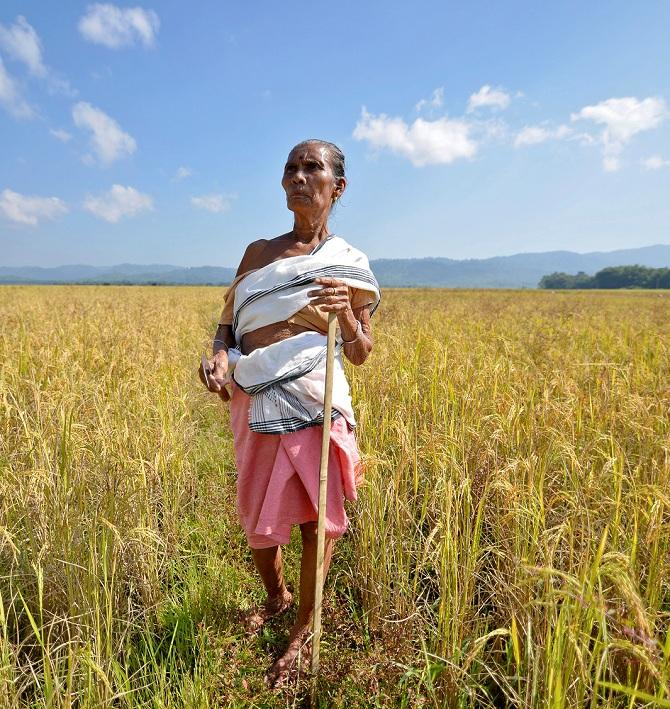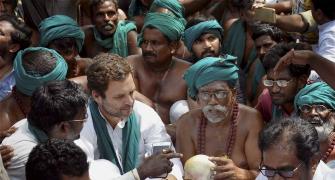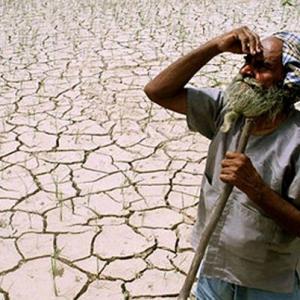Uttar Pradesh and Punjab have announced loan waivers for farmers, and Maharashtra might concede to Opposition pressure to do so. Sanjeeb Mukherjee reports.

The Centre has said it would not share the financial burden of farm-loan waivers announced by states.
This would mean the states would be more comfortable to waive loans taken only from financial institutions within their jurisdiction, which would be state and district credit cooperative societies and primary agriculture credit societies. Uttar Pradesh and Punjab have announced loan waivers, while Maharashtra has not despite Opposition pressure.
Loans taken from scheduled commercial banks in any given credit season comprise more than 70 per cent of farm credit availed by growers. Some experts said any state government can ask scheduled commercial banks to collect loan dues, but this has seldom happened.
It is not clear who would be asked to bear the loan waiver burden: Cooperative societies or the state exchequer?
Barring Punjab, state cooperative banks are not healthy enough in UP and Maharashtra because of non-performing assets (NPAs). But profits of cooperative banks in Punjab do not match the debt-waiver requirement.
Let us look at the financial health of cooperative banks in some major states:
Uttar Pradesh
The most-talked about loan waiver promise was made by the BJP government under Chief Minister Yogi Adityanath.
The financial burden on the state's exchequer, according to the available reports, could be between Rs 8,000 crore and over Rs 62,000 crore.
An analysis of the data furnished by National Bank for Agriculture and Rural Development (NABARD) by independent researchers showed gross NPAs as percentage of gross loans at UP cooperative banks fell from 6.2 per cent to 4.8 per cent from 2012 to 2015. The national average had moved from 6.9 per cent to 5 per cent in this period.
Profits of UP cooperatives rose from Rs 30 crore in 2012 to Rs 40.4 crore in 2015, a 35 per cent increase. The provisioning done by cooperatives for NPAs was not available and, hence, profitability might look higher.
The cooperatives might be able to bear up to Rs 12 crore from their profits.
"The state cooperative banks, contrary to perception, are not in a very bad financial state in UP," a senior official who has worked in the state and central governments told Business Standard.
Punjab
Punjab's new government had recently asked the Centre's support for a farm loan waiver.
Cooperative banks in the state are healthy on the NPA front. Though the profits of state cooperative banks, according to NABARD, have dropped between 2012 and 2014 (Rs 27.2 crore to Rs 17.3 crore), it was Rs 21.3 crore in 2015. NPAs as percentage of outstanding loans were 0.9 to 0.7 between 2012 and 2015 -- lower than the national average.
The total farm indebtedness in Punjab, according to a survey done by the Punjab Agriculture University, was around Rs 69,355 crore.
Maharashtra
The Opposition in this BJP-ruled state have demanded a farm-loan waiver. The state government refused, saying it would cost the exchequer Rs 30,000 crore.
However, the government might concede to the Opposition's demand, sources said.
The state's cooperative financial institutions are saddled with double-digit gross bad debts.
The cooperatives make profits and can bear a debt-waiver burden. A NABARD study showed the cooperative banks' NPAs as percentage of loans outstanding dropped by almost half from 21.2 per cent in 2012 to 11.7 per cent in 2015. Profits of cooperative banks rose from Rs 175.40 crore in 2012 to Rs 410 crore in 2015.
The figures of bad debts are in gross terms and profits might be on the higher side depending on the provisions.










